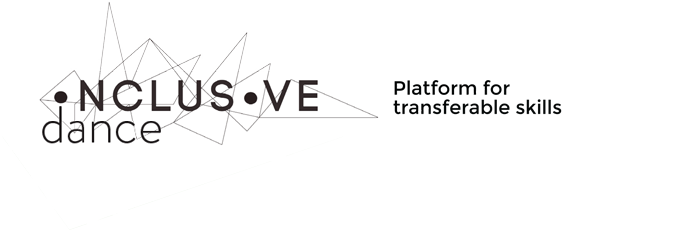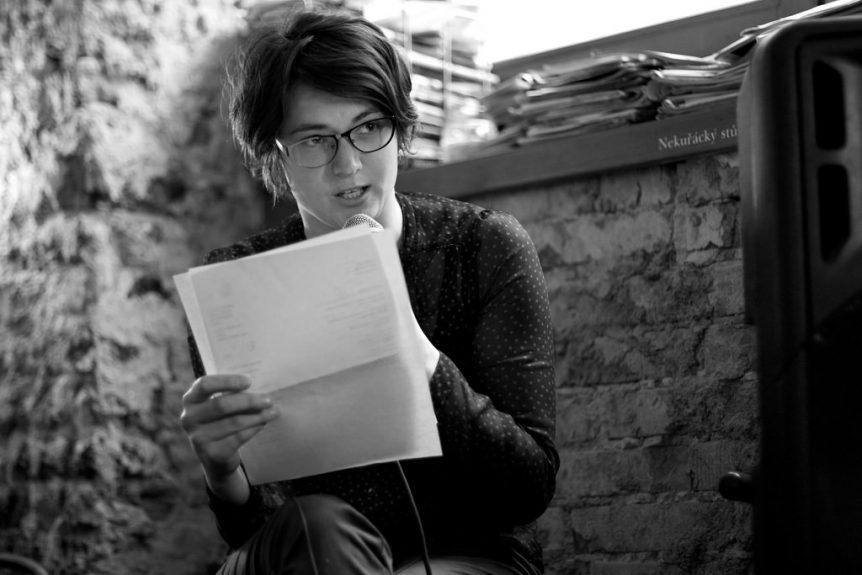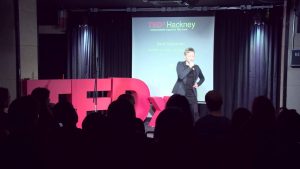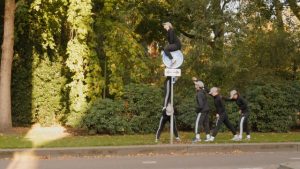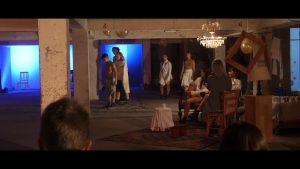by Katerina Dietzova
leader of the Feldenkrais classes for people with Parkinson
Tereza studied department of Religious studies and Greek at Charles University in Prague. After that she started work in the field of theater production, community and ecological activities under the NGO AutoMat. She was always interested in dance improvisation and other ways how to work with the body, which lead her to Feldenkrais method. Since 2014 Tereza participates in 4year professional training. She is interested in brain research and new development in the field of neurology and further in dance and theater. She loves books.
- How did you get to somatic methods, were somatic methods always part of your life?
I went through a serious life crisis after some changes in my personal life about 5 years ago. I questioned a lot of things in my life at the time. One of the things I realized was that I needed to establish some relationship with my body, my physical existence. Get in touch with it. I also wasn’t happy with the one-sided, computer and telephone bounded kind of work. So I decided to make this big step and go for the 4 years Feldenkrais training. I knew the method from before and thought it was very smart, and I also thought it would be good to know something so practical and down to earth that I can do with my hands.
- How did you get to the dance for Parkinson‘s classes?
I was approached by Kateřina Dietzová who manages the project. She knew I was doing Feldenkrais and probably thought it would be interesting to combine this with dance therapy. I think these two approaches go together really well. The Feldenkrais method is slow and goes in depth into particular movement. Dance therapy then brings the action, the wholeness and „flow“ of moving.
- How did your view on somatic methods change thanks to the work with people with Parkinson’s?
My teaching of Awareness through movement (group lessons in Feldenkrais method) for the people with Parkinson’s is also one of my first experiences in teaching Feldenkrais at all. So I am learning a lot, every lesson! Here are people with severe motor limitations. So you can do a lot less. But then also Feldenkrais always used to say: Do less! So finding the right approach with these clients is about flexibility and being curious instead of expecting the results. Then the lessons start to be positive for them and bring effect.
- What is the sense/aim of dance for people with Parkinson?
I think the goal for Feldenkrais work with Parkinson patients should be to give them the best awareness of their body there is possible, so that they know how to overcome the obstacles posed to them on a daily basis. This is a very practical thing, such as „How do I get from back to side (in lying)“, „How do I get from lying to sitting“ and so on. Using the body consciously is one of the ways to overcome the Parkinson’s disease; the automatic movement which starts to disappear is replaced by conscious attention, and this is exactly what the Feldenkrais method is teaching us.
- How is Feldenkrais class for Parkinson patients different from a general Feldenkrais class? Do experiences from this class nurture you as a Feldenkrais practitioner in general?
Well, it is much slower; there are some positions in which you cannot work (on the belly). Also, it becomes much more important to find the core of the lesson, and bring it to the clients, even in simplified form.
- Could you share the most valuable moment of experience from this class?
I don´t have one particular moment. For me, it is quite special to see the class full almost every time, and to see the people get up from the floor after the lesson and walk!
